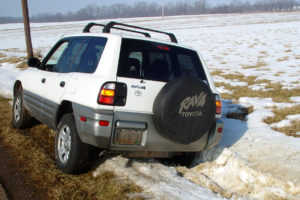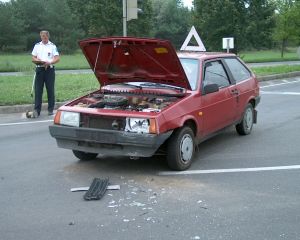How much auto insurance do I need?
 Many people often ask how much auto insurance do I need, especially when they initially start driving. It is a very common concern since you do not want to spend too much money purchasing unnecessary coverage. However, before you decide, make sure you review a few things first.
Many people often ask how much auto insurance do I need, especially when they initially start driving. It is a very common concern since you do not want to spend too much money purchasing unnecessary coverage. However, before you decide, make sure you review a few things first.
Locating great rates for car insurance requires little effort when you add your ZIP code into the FREE tool!
When you need to buy a car insurance policy, you should think of your own situation and consider your lifestyle and finances. The essentials vary. You could have a friend or family member with full-coverage that swears by their selections, while you could do with simple, basic protection.
Consider your History and Previous Experience
Many times, the amount of car insurance you require depends on your past because this information builds your driving record. If you just received your license, chances are you have very few, if any negative marks. This could be a good thing, since the auto insurance company you choose will need to figure out if they want to take the risk of issuing a policy.
On the other hand, new drivers may automatically receive the highest rates, just because they have not gained enough practical knowledge. This can work for or against you so you should know what to expect, either way.
If you have more than three years of driving under your belt, you probably already have a current car insurance provider and can use your existing auto insurance selections as a guideline.
 Perhaps you started out with many levels of coverage, but now you realize you may not need everything. In any case, start at the beginning and find out what matters most to you.
Perhaps you started out with many levels of coverage, but now you realize you may not need everything. In any case, start at the beginning and find out what matters most to you.
The amount of security you want tends to dictate the coverage you pick and auto insurance is for protection against loss of property, injuries, and income.
If your history shows a pattern of safety based on good decisions, you may come out ahead by opting for the lowest level of coverage your state allows. In most cases, this is liability bodily injury and property damage only. You can save hundreds of dollars each year with this kind of protection, even if you have high limits far above the state minimum requirements.
With a direct and clear-cut liability policy, you can receive enough money to pay for any damage you cause to drivers, their passengers, and any pedestrians too. It is a great way to make sure you remain compliant with your state, without excessive spending.
When and Where You Drive Matters
When and where you drive your car has a heavy impact on the type of auto insurance coverage you need as well. It is a proven fact that exposure to factors like rush hour traffic and inclement weather contribute to more accidents each year.
 In fact, the Department of Transportation explains how more single vehicle accidents occur in urban areas, as opposed to rural communities. In addition, 75% more car crashes happened during poor weather like sleet, fog, snow, and rain.
In fact, the Department of Transportation explains how more single vehicle accidents occur in urban areas, as opposed to rural communities. In addition, 75% more car crashes happened during poor weather like sleet, fog, snow, and rain.
Rain was the most deadly weather condition because many people underestimate the seriousness and do not drive accordingly. Skids happen more often during light rainstorms than snowstorms.
This implies that if you choose alternative methods for daily travel, you could avoid traffic in the metropolitan cities and this could justify a decrease in collision auto insurance coverage. Large cities, like Los Angeles have complex highways and freeways with multiple lanes and variable speed limits.
It is very easy to imagine the number of collisions each day with these types of obstacles. Ironically, this city also has a mass transit line that travels into a majority of towns to help commuters avoid rush hour. Unfortunately, this does not seem to appeal to most.
The same rationale applies in certain regions with severe weather, like on the east coast. Luckily, many commuters across the eastern states utilize mass transportation options, much more than their west coast counterparts.
 New York residents for example, pack the trains and even ferries each day to travel to and from their occupation destinations. Regrettably, the streets in midtown and other boroughs still manage to become overcrowded with out-of-state drivers who refuse to park and ride.
New York residents for example, pack the trains and even ferries each day to travel to and from their occupation destinations. Regrettably, the streets in midtown and other boroughs still manage to become overcrowded with out-of-state drivers who refuse to park and ride.
You still have a choice and if you decide to walk, bike or share a ride to work every day, you might be in a better position to reduce your risk of having an accident, which helps you avoid choosing extra levels of auto insurance protection.
The Cost of Too Little Auto Insurance
Unless you have millions of dollars in disposable funds, you should review your finances, very carefully. The cost of too little auto insurance can be devastating to you and your family.
Begin with a quick assessment of your assets by using the net worth calculator provided by Accel Services. This financial counseling company has expert resources for you to take advantage of to ensure that you will not lose everything if you have an accident.
This is extra important for serious damage claims, including medical and loss of life. You must choose the correct liability, personal injury protection or medical payment coverage and limits. If not, you may need to draw from your savings and this can drain your bank account, fast.
Because accidents are unforeseen, they happen when you least expect it and many do not think to prepare in advance. However, if you already know what your finances look like, if the issue arises, you will be in a better state. Another key element to being prepared revolves around a loss of income.
Perhaps you did not injure anyone in an accident, but rather, you injured yourself. This could take you away from your full-time job for some time. Your employer may offer short-term disability, but even these funds run out after a few weeks. If your family relies on your income to meet their needs, you could quickly fall into debt.
Relying on credit to get you over the hurdle until you can start working again is always a double-edged sword. It is a very difficult line to walk and most cannot succeed using this process. The statistics prove that as a country, credit management is very careless.
As of September 2012, Treasury Direct reports the national debt is over $16 trillion dollars. Of this amount, the American people contribute over $11.2 trillion; the government only shares a little over $4.7 trillion.
You may have only a small part of this equation right now, but if you take a major loss because of a car accident, your debt can multiply within a few short months.
Free Car Insurance Comparison
Compare Quotes From Top Companies and Save
Secured with SHA-256 Encryption
Your Choice in Vehicles Can Help You Decide
Practically everyone knows the most popular vehicles for car thieves include the Cadillac Escalade and the Ford F-series trucks. However, not much thought seems to surround those that no one wants.
Your choice in vehicles can assist you with deciding on car insurance options.
Take the article written in 2011, by the Insurance Institute for Highway Safety for instance. According to the number of comprehensive claims recorded that year, certain vehicles have huge bulls eyes attached to them while others never receive a second glance.
 The Audi A6 is a lovely, luxury car with all of the bells and whistles, yet the Escalade has a higher level of preference for car thieves. It makes you wonder why. In the past year, Cadillac Escalade owners filed six times as many comprehensive claims as Audi owners.
The Audi A6 is a lovely, luxury car with all of the bells and whistles, yet the Escalade has a higher level of preference for car thieves. It makes you wonder why. In the past year, Cadillac Escalade owners filed six times as many comprehensive claims as Audi owners.
Other cars making the least likely to be stolen list include the Chevy Equinox, Mercury Mariner, Mini Cooper and Saturn VUE. Even the BMW 5 Series and Lexus RX made this list.
You should read up on your current events and research the national statistics each year.
You could have a low-target vehicle that warrants the removal or exclusion of comprehensive automobile insurance. The odds of you losing your vehicle to a car thief could be very low.
At-Fault or No-Fault State Car Insurance Responsibilities
Do you know if you live in an at-fault or no-fault state? If not, you had better find out and fast. This can make a world of difference in your car insurance responsibilities and cost you more money over time.
A state with no-fault laws requires each driver to have a certain level of insurance including personal injury protection, uninsured motorist, and liability bodily and property damage.
There are approximately 13 no-fault states throughout the United States including New York, New Jersey, Pennsylvania, and Colorado.
If you live in one of the no-fault states, the process for filing a claim is straightforward. The cause of the accident does not matter; you have a responsibility to report the accident to your auto insurance provider.
 No-fault auto insurance is just as it sounds and it can be a major inconvenience for the victim. Even if you were minding your business and driving down the road, you still have to pay the initial deductible and wait for reimbursement from your car insurance company. They will go after the guilty driver’s insurance company.
No-fault auto insurance is just as it sounds and it can be a major inconvenience for the victim. Even if you were minding your business and driving down the road, you still have to pay the initial deductible and wait for reimbursement from your car insurance company. They will go after the guilty driver’s insurance company.
Under the current no-fault car insurance regulations, if you are seriously injured, you have a limit to the amount you can sue to receive monetary restitution for your injuries. Your car insurance company pays the cost for everything including medical procedures, lost wages, or death benefits.
However, if this is not enough to satisfy your losses, you can go to court to seek justice. Unfortunately, the cap falls under tort laws and unless you signed a waiver during your application process, you still only receive the maximum allowed by the laws of your state.
At-fault state laws are very different and the majority of the states follow these rules. With an at-fault car insurance claim, you must wait for your auto insurance carrier to decide who broke the law and caused the collision.
Once they finish their investigation, you receive the amount they decide is reasonable. The upside is the limit to sue does not exist. The drawback is the wait can take weeks, months, or even years in extreme cases.
When in Doubt Call Your Auto Insurance Agent
Never forget that you can always speak with your auto insurance agent or a professional customer service representative if you have doubts. Their first directive is to ensure that you have the kind of policy you need and can afford.
If you need to make small changes because of a new circumstance in your life, you should feel comfortable enough to call your agent for their expert advice.
Should you ever require a little handholding, do not feel embarrassed. Make your agent work for you and answer questions to ease your mind.
Taking the leap of faith and purchasing auto insurance is something that you must get used to because you will likely encounter this situation more than once in your lifetime. The positive news is you can always alter your options whenever you need. Remain alert, learn to adapt and act fast when necessary. This will help balance your finances and leave you with no regrets.
The pathway is clear for you to add your ZIP code in the FREE toolbox for great car insurance rates!
